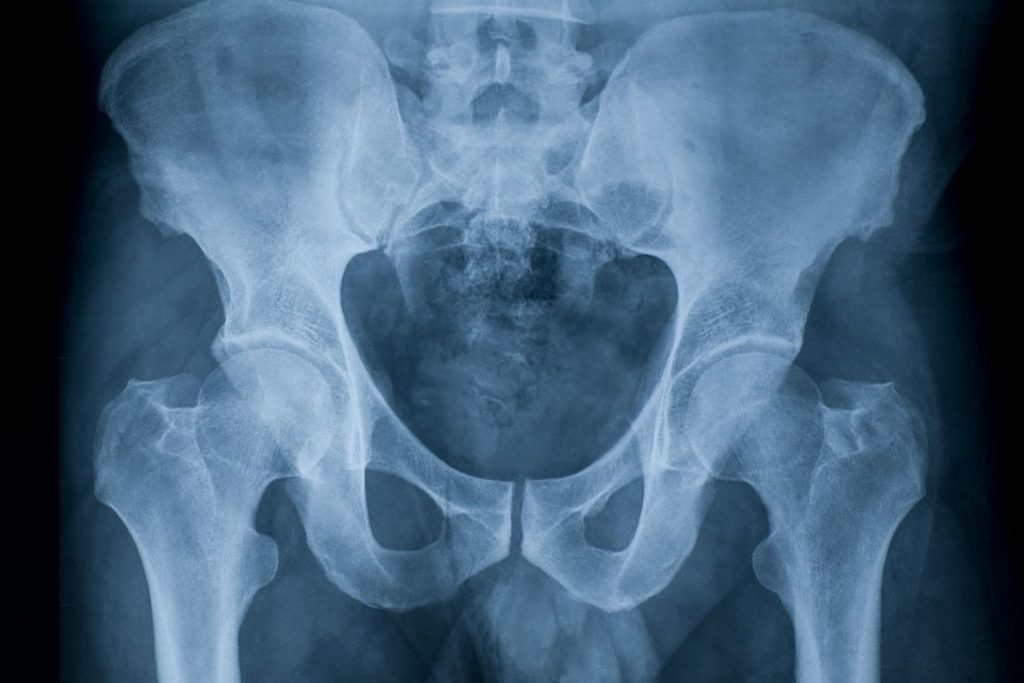HIP Injuries
A Few Words
About Hip Injuries
Meet your sports hip expert
Mr Declan Bowler is a lower limb sports injury specialist and has been performing hip arthroscopies in Ireland since his return from Fellowship training in the USA in 2007. He has performed a high-volume of hip arthroscopies over the years and has been involved in teaching surgeons internationally as an Instructor for the Arthroscopy Association of North America (AANA) at the Hip Arthroscopy Course at the Orthopaedic Learning Centre, Chicago, USA.
Common Causes of Young Adult Hip Pain
Femoroacetabular Impingement (FAI) Syndrome:
FAI is a major cause of hip pain in young adults. It occurs when there is abnormal contact between the femoral head and the acetabulum (hip socket), resulting in joint pain and reduced range of motion. It is quite prevalent in the pivoting sports in Ireland such as GAA and soccer.
Labral Tears: The labrum is a ring of cartilage that surrounds the hip socket, providing stability and cushioning to the joint. Labral tears can be caused by trauma, repetitive stress, or structural abnormalities such as FAI. These tears can lead to pain, instability, and a catching sensation in the hip.
Hip Flexor Strain: The hip flexor muscles play a crucial role in bending and lifting the leg. Overuse or strain of these muscles can lead to inflammation and pain in the front of the hip.
Iliotibial Band Syndrome: The iliotibial (IT) band is a thick band of fibrous tissue that runs along the outside of the thigh. IT band syndrome occurs when the band becomes tight and inflamed, causing pain on the outside of the hip.
Bursitis: Bursae are small, fluid-filled sacs that provide cushioning between bones, tendons, and muscles. Inflammation of a bursa, known as bursitis, can cause pain and tenderness in the hip region.
Hip Dysplasia: This is a congenital condition where the hip socket is abnormally shallow, leading to instability and increased risk of joint damage. Hip dysplasia can cause pain and limited range of motion, particularly in active young adults.
Stress Fractures: These are small cracks in the bone that can occur due to overuse or repetitive stress. Stress fractures of the hip are more common in athletes and can cause significant pain during weight-bearing activities.
Osteoarthritis: Although osteoarthritis is more common in older adults, young adults can also develop this degenerative joint disease, particularly if they have a history of joint injury, obesity, or genetic predisposition.
Femoroacetabular Impingement (FAI) Syndrome
FAI syndrome is a condition in which the bones of the hip joint are abnormally shaped, causing them to rub against each other and create friction during movement.
There are three main types of FAI:
Cam impingement: This occurs when the femoral head (the ball-like end of the thigh bone) is not perfectly round, causing it to rub against the acetabulum (the socket of the hip joint) during certain movements.
Pincer impingement: In this type, the acetabulum covers too much of the femoral head, leading to pinching of the labrum and cartilage during movement.
Combined impingement: This is a combination of both cam and pincer impingement.
Symptoms of FAI syndrome includes hip pain, stiffness, and reduced range of motion. The pain may be experienced in the groin, outer hip, or buttock area and may be exacerbated by activities like squatting, sitting for long periods, or pivoting on the affected leg. Without treatment, FAI can lead to progressive cartilage and labral damage, eventually resulting in osteoarthritis.
Conservative Management
Conservative management is often the first line of treatment for FAIS and may include:
Activity Modification: Patients with FAIS should avoid activities that exacerbate their hip pain, such as deep squatting, lunging, or high-impact sports. It is essential to identify and modify activities that cause hip pain to prevent further damage to the joint.
Physiotherapy: A targeted physiotherapy program can help improve hip joint function, flexibility, and strength. Physiotherapists may employ various techniques such as manual therapy, stretching exercises, and strengthening exercises for the hip and core muscles. Furthermore, physios can provide guidance on proper body mechanics during daily activities to reduce stress on the hip joint.
Nonsteroidal Anti-inflammatory Drugs (NSAIDs): Over the counter NSAIDs, such as ibuprofen or naproxen, can help manage pain and inflammation associated with FAIS. However, these medications should be used with caution and under the guidance of your doctor, as long-term use may have potential side effects.
Crutches: In some cases, the use of crutches may be necessary to alleviate weight-bearing stress on the affected hip joint, allowing it to heal and recover.
Corticosteroid Injections
Corticosteroid injections can provide temporary pain relief for patients with FAIS. These injections involve the administration of a corticosteroid, typically combined with a local anaesthetic, directly into the hip joint under ultrasound guidance. The corticosteroid helps reduce inflammation within the joint, providing short-term pain relief.
However, these injections should be used judiciously, as repeated use may have potential side effects, such as weakening of the joint and surrounding tissues.
Surgical Interventions
If conservative measures fail to provide adequate pain relief or improve joint function, surgical intervention may be necessary. The two primary surgical options for FAIS are:
Hip Arthroscopy: This minimally invasive procedure involves the insertion of a small camera (arthroscope) and surgical instruments through tiny incisions around the hip joint. Mr Bowler can visualise the joint and perform necessary corrective procedures, such as reshaping the femoral head, trimming the acetabular rim, repairing labral tears, and removing damaged cartilage. The benefits of hip arthroscopy include reduced recovery time, less postoperative pain, and minimal scarring compared to open surgery.
Open Hip Surgery: In more complex cases or when arthroscopy is not feasible, open hip surgery may be required. This involves a larger incision to access the hip joint and perform the necessary procedures. Open surgery typically has a longer recovery period and may be associated with more postoperative pain and scarring. This type of open surgery is performed much less nowadays with the advances in arthroscopic techniques.
Treatment options for femoroacetabular impingement syndrome range from conservative management to surgical interventions, depending on the severity of the condition and the patient’s response to conservative measures. Early diagnosis and appropriate treatment are crucial to prevent long-term joint damage and maintain hip function. A collaborative approach involving the patient, surgeon and physiotherapist are essential in achieving optimal outcomes in the management of FAIS.
